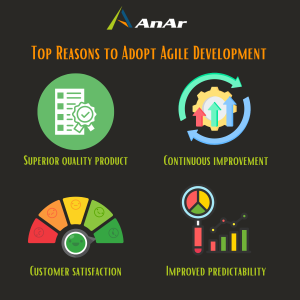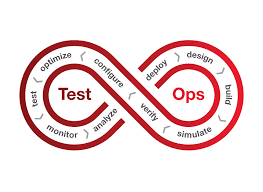In the ever-evolving landscape of technology, software development stands at the forefront of innovation and change. Gone are the days when a solitary programmer could build an entire application from scratch in isolation. Today’s software projects are complex, collaborative efforts that require adaptability, speed, and a keen eye on customer needs. This is where Agile methodologies come into play, revolutionizing the way teams develop software and deliver value to customers.

Understanding Agile Methodologies
Agile isn’t just a buzzword or a trendy framework; it’s a fundamental shift in how we approach software development. Originating from the Agile Manifesto crafted in 2001 by a group of seasoned developers, Agile emphasizes individuals and interactions over processes and tools, working software over comprehensive documentation, customer collaboration over contract negotiation, and responding to change over following a plan.
At its core, Agile is about embracing change and delivering incremental value through iterative development cycles. Rather than trying to build an entire product in one go, Agile teams break down projects into manageable chunks called iterations or sprints. Frameworks like Scrum and Kanban provide structures within Agile to help teams organize their work, communicate effectively, and continuously improve their processes. For more background and insights, you can explore various Agile Best Practices.
Why Agile Matters in Software Development
In a world where market trends shift rapidly and customer expectations evolve overnight, traditional linear project management methods often fall short. They lack the flexibility to adapt to new information or changes in scope without significant delays or cost overruns. Agile methodologies, on the other hand, are designed to handle uncertainty and change gracefully.
By working in short sprints, Agile teams can quickly adjust their priorities based on customer feedback or market demands. This adaptability not only keeps projects aligned with business goals but also ensures that the final product remains relevant and valuable to the end-users.
Key Benefits of Implementing Agile
- Superior Product Quality
Quality isn’t just an end goal in Agile; it’s an integral part of the process. Continuous integration and regular testing are embedded within each development cycle. By identifying and addressing issues early, teams can prevent defects from compounding and ensure that each increment of the product meets high standards. This iterative approach allows for constant refinement, leading to a more polished and reliable final product. - Increased Customer Satisfaction
Agile methodologies place the customer at the heart of the development process. Through regular feedback loops and active customer involvement, teams can tailor the product to meet actual user needs. This ongoing collaboration ensures that the software evolves in line with customer expectations, resulting in higher satisfaction and a stronger relationship between the customer and the development team. - Better Project Control
Transparency is a hallmark of Agile. Daily stand-up meetings, sprint reviews, and retrospectives keep everyone informed about project progress and challenges. Tools like burndown charts and sprint backlogs provide real-time visibility into the team’s work, enabling managers to make informed decisions and adjust plans proactively. This level of control helps prevent surprises and keeps the project on track. - Improved Flexibility and Adaptability
Change is inevitable, especially in software development. Agile methodologies embrace this reality by allowing for adjustments at the end of each sprint. Whether it’s a shift in market conditions or new customer requirements, Agile teams can pivot quickly without derailing the entire project. This flexibility reduces the risks associated with changing priorities and keeps the team focused on delivering the most valuable features first. - Reduced Risks
By delivering work in small, manageable increments, Agile minimizes the chances of project failure. Each sprint produces a potentially shippable product increment, meaning there’s always a working version of the software available. This approach ensures that even if priorities change dramatically, the work completed still holds value and can be adapted for future use. - Faster Return on Investment (ROI)
Agile’s focus on early and continuous delivery means that customers can start using parts of the software sooner. By prioritizing high-value features, teams enable businesses to generate revenue or improve operations earlier in the project lifecycle. This accelerated time-to-market can be a significant competitive advantage and contributes to a quicker ROI. - Continuous Improvement
Agile fosters a culture of learning and growth. Through regular retrospectives, teams reflect on what went well and what could be improved. This introspection leads to actionable insights and process enhancements that benefit future sprints. Over time, this commitment to continuous improvement enhances team performance and product quality. - Enhanced Team Morale
Empowerment and collaboration are key elements of Agile teams. Members are encouraged to take ownership of their tasks, contribute ideas, and work closely with one another. This environment builds trust, fosters creativity, and can lead to higher job satisfaction. When team members feel valued and engaged, they’re more likely to perform at their best. - Relevant Metrics and Predictability
Agile teams utilize meaningful metrics like velocity, lead time, and cycle time to monitor progress and predict future performance. These metrics provide insights into how quickly the team can deliver value and help in forecasting project timelines. With better predictability, stakeholders can make informed decisions and manage expectations effectively.
Implementing Agile Successfully
-
Transitioning to Agile methodologies requires more than just adopting new processes; it involves a cultural shift within the organization. Here are some steps to ensure a successful implementation:
- Educate and Train: Invest in training programs to help team members understand Agile principles and practices. Knowledge sharing sessions and workshops can build a solid foundation.
- Start Small: Begin with a pilot project or a small team to test Agile practices. Learn from the experience before scaling up to larger projects or multiple teams.
- Engage Stakeholders: Involve customers, managers, and other stakeholders early and often. Their support and understanding are crucial for Agile to thrive.
- Overcome Resistance: Change can be challenging. Address concerns transparently, highlight the benefits, and provide support to those adapting to new ways of working.
- Utilize Tools: Leverage Agile project management tools that facilitate collaboration, tracking, and communication. Tools like Jira, Trello, or Asana can help streamline processes.
Case Studies
Many organizations have reaped remarkable benefits from adopting Agile methodologies. For instance, a financial services company facing prolonged development cycles shifted to Scrum, reducing time-to-market by 30% and enhancing customer satisfaction through more frequent feedback loops. Meanwhile, a tech startup applied Kanban to visualize tasks, quickly spot bottlenecks, and streamline processes—leading to a significant boost in productivity and team morale.
A well-known example is Spotify’s Agile transformation, which emphasized cross-functional “squads” and autonomous teamwork. This approach allowed Spotify to respond rapidly to user feedback, continually refine features, and maintain a culture of innovation while scaling at a global level.
The Future of Agile in Software Development
As technology continues to advance, Agile methodologies are poised to play an even more critical role. With the rise of digital transformation initiatives, organizations need to be more responsive and customer-centric than ever. Agile provides the framework to navigate this complexity, encouraging innovation and continuous improvement.
Emerging trends like DevOps and Agile scaling frameworks (e.g., SAFe, LeSS) are extending Agile principles beyond individual teams to entire organizations. This holistic approach ensures alignment across all levels and functions, fostering a truly agile enterprise.
Conclusion
Agile methodologies have reshaped the software development landscape by prioritizing adaptability, collaboration, and customer value. The benefits are clear: superior product quality, enhanced customer satisfaction, better control over projects, and a more engaged team. By embracing Agile, organizations position themselves to respond effectively to change, innovate continuously, and deliver exceptional products that meet the evolving needs of their customers.
At AnAr Solutions, Agile is more than just a methodology—it is a mindset that guides every stage of development. By embracing iterative progress, maintaining continuous feedback loops, and encouraging cross-functional collaboration, AnAr Solutions ensures that projects stay aligned with evolving business needs. This approach not only enhances efficiency but also builds resilience, enabling teams to navigate complexities and deliver impactful solutions.
For organizations yet to explore Agile, the journey may seem challenging, but the rewards outweigh the uncertainties. The ability to adapt, learn, and improve continuously is what sets successful teams apart in today’s fast-paced environment. Whether starting small or committing to a full transformation, taking the first step toward agility can redefine how software is built and delivered.
Explore the features of MSTest, NUnit, and xUnit: three leading unit testing frameworks that enhance your C# development process.
Organizations across the globe are increasingly turning to legacy modernization to keep pace with rapidly evolving business needs and stay ahead of…
In waterfall project management, software engineers create a feature and then throw it over to the quality assurance team (QA)…
Test and Operations (TestOps) is the emerging trend in testing. It introduced a newer technique of testing. This advanced testing…










